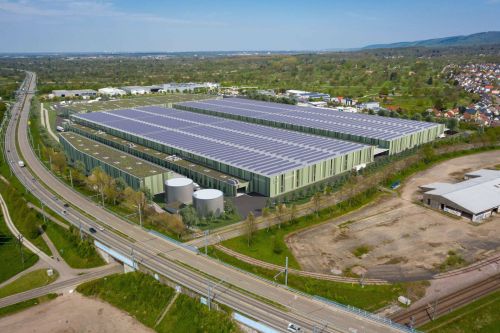Always a Central European
Investment & finance
Analysts are predicting some kind of market correction in the US by 2018/2019, which then might spiral out into the global markets and to Europe. This won’t necessarily come in the form of a crisis, but rather as a type of restoration, a deceleration of the current boom, and a decrease in development volumes. There is a lot of capital out on the market waiting to be invested in real estate, and if it stays that way there isn’t going to be any serious problem.
Now that investors have returned to Budapest, can we expect TriGranit to concentrate its investment at home in Hungary – or do you now see yourselves as more of a CEE player?
TriGranit has always been a Central European player, headquartered in Budapest with offices in different Central European cities. Our focus countries and cities always depend on development and economic factors and trends in the CE region. In Hungary and Budapest the current macro-economic indicators are among the best in the region: the country received its long-awaited credit rating upgrade from Fitch in May, and there is a remarkable level of demand for new class ‘A’ office stock. In Budapest, the office pipeline until the end of 2018 is now a record 260,000 sqm gla – compared to the 2014 new office stock of 68,000 sqm gla. The investment volume is similarly overwhelming – whereas the investment volume in 2014 reached app. EUR 550 mln, in 2016 the Q1–Q3 period alone brought in EUR 1.47 bln. This is why it’s more likely that we’re going to be more active in Hungary than in previous years, but we intend to keep up our strong presence and high level of activity in our other core countries – especially considering that 2016 has been a remarkable year throughout the whole region in terms of investment volumes and new developments.
Where in the CEE do you see the best opportunities for retail development and for office buildings?
Generally, it’s definitely Poland that offers the most opportunities for investment and for development, not least due to its size as well as its strong and stable economy – its GDP is 26 pct higher than in 2008. We currently have two office developments and one retail development plan in preparation. As for offices, Warsaw and the secondary cities in Poland and Budapest are exceptionally strong, being driven up by the shared services sector. In terms of retail development opportunities, I would definitely say Warsaw. Looking at the wider region, we still believe in Bucharest retail developments and there is also room for more schemes in some of the secondary cities of Romania. The country has great potential – the GDP growth will reach app. 4 pct this year, partly due to a new tax reducing VAT by 4 pct. Investment on the Romanian retail market had already reached EUR 170 mln by the second quarter of 2016. However, with retail we have to consider its nature. Modern, western-style shopping centres appeared in the CE region in the late 90s and early 2000s. At that time, they answered the growing needs of private consumption. Furthermore, they have played a significant role in strengthening the economy. But retail developments have their limits – a given number of shopping centres can cover the needs of a population, so after a while, only really good products in good locations survive. That’s why retail development won’t be so dynamic in the future.
Which is the better market at present: retail or offices?
If we only consider the changes in liquidity in the CE region, then it’s definitely the office market. Comparing H1 2015 with H1 2016, the growth in the office investment market outperformed the growth in the retail investment market by a remarkable degree: a 121 pct increase compared to a 63 pct y-o-y change in retail. Despite this, retail – in terms of investment volume – outperformed offices by a wide margin in H1 2016, with EUR 2,446 mln compared to EUR 1,764 mln in closed transactions. Generally, retail developments will always be a better tool for creating value and profit. With offices, you close leasing agreements with fixed terms for longer periods, which secures a stable, but non-changeable return. Retail, however, is much more of a moving target – when the economy and market is performing well, you can achieve much higher returns. And unfortunately, the opposite is also true.
Recently you’ve sold Millennium Towers to CA Immo and BCC to Rockcastle. What does this reveal about the market?
The sale of Millennium Towers in Budapest is the largest ever transaction on the Hungarian office market. While the sale of the Bonarka City Center in Kraków ranks as the real estate market’s greatest single asset transaction in Poland in 2017. There is an enormous amount of investment money in the Central European real estate market. In Hungary alone, the overall investment volume between January and September 2016 reached in EUR 1.47 bln, almost twice as much as the annual volume for 2015. I expect this trend will also continue in 2017 and, in addition to that, it’s possible that in Budapest every quality asset could change hands over the next 12 to 24 months.





















































